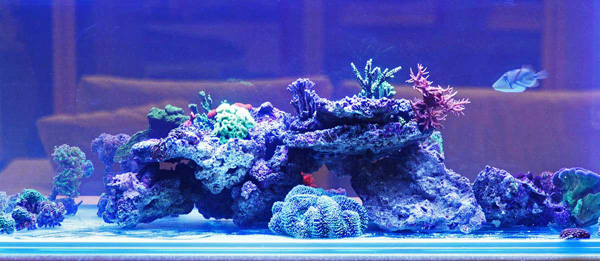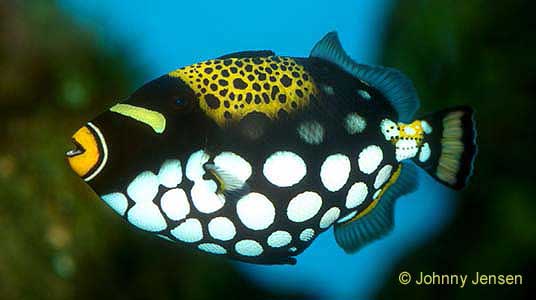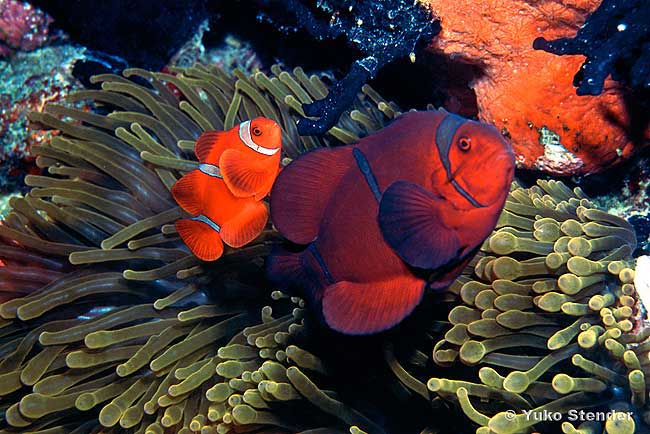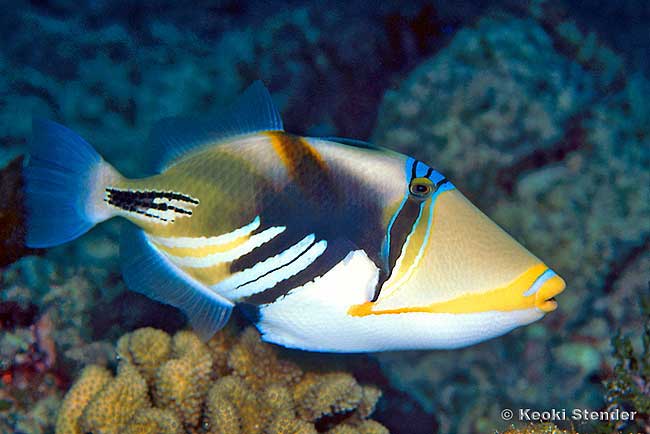
Image Source: Matt Leighton, vivofish.com As you look at all the beautiful fish that could be living in your home, it is important to consider the following in order to choose the right saltwater fish for your aquarium and to successfully introduce new saltwater fish into your aquarium: Saltwater Aquariums Can Be a Challenging HobbyIf you have been keeping freshwater tropical fish for some time, then you already know that saltwater aquariums can be a challenging hobby in which you will make many mistakes. When it comes to saltwater tanks, you will have to manage a whole new set of water chemistry parameters. Since some marine fish are more dependent on their environment for nutrition than freshwater species, it can take much longer to prepare the tank. That all being said, there is nothing quite like saltwater fish when it comes to stunning colors, psychology,and sheer gracefulness. Household ConsiderationsSince some saltwater fish have poisonous darts, it is best to make sure children, pets, or others who do not understand the risks are never around the fish tank unsupervised. As with freshwater fish, some marine fish are also very sensitive to external sounds, odors that get absorbed into the water, vibrations, and even static electricity in the air. Before you set up a marine aquarium, it is best to know how these external factors might impact the water from a chemistry and physical perspective. Tank Size and EquipmentEven though some fish will not get very big, territorial needs or dietary needs may still mean they need larger tanks. Water ChemistryAlong with basic freshwater chemistry considerations (pH, carbonate hardness, general hardness, and nitrate sensitivity), you will also need to find fish that are compatible in terms of their salinity level and other dissolved mineral requirements.  Image Source: Matt Leighton, vivofish.com Choosing a Habitat DesignFor some fish, you may be able to simply add plants, algae, or kelps that will tolerate salt water. Others will require a complex living reef tank with specific species of corals and anemones or they will need sustainable colonies of crustaceans or other creatures to consume. These creatures, in turn, will also need to have their environmental needs met. Temperament and CompatibilityOverall, you will find that saltwater fish can be just as aggressive, or just as passive as their freshwater counterparts. Everything depends on the species in question and how they interact with others of their own kind, ones that are similar to them, and ones completely unrelated.  Successfully Introduce New Saltwater Fish into Your Aquarium1. Know the Optimal Water Chemistry Parameters for the Fish Before you adjust or setup a quarantine tank, you will need to know the optimal baseline parameters to introduce new saltwater fish into your aquarium. Use these values for the initial cycling of the quarantine tank. 2. Set up a Quarantine Tank This tank should have live rock, proper filtration, a water circulation level suitable for the fish under quarantine, and places for the fish to hide. Do not include living coral reef in the tank or other creatures that might die off suddenly or emit toxins because of even slight water chemistry changes. If the fish need living coral to consume, only put small amounts in on a daily basis and remove them quickly. The water chemistry in the tank should be set to the optimal parameters for the fish you are quarantining. You may have to adjust the quarantine water chemistry several times during this period. 3. Test the Water in the Bag (but don't trust the readings) Overall, the pH and hardness levels may be skewed by the presence of ammonia and minerals released from fish waste. A great deal depends on how long the fish were kept in the bag for transport and how they were prepared for their journey. Those readings may be actually what the breeder used for the fish, even if they aren't within the parameters for the species. You can still use the salinity readings from water found in the bag, but do compare them to optimal range for the species.  4. Set Up a Temporary Acclimation Bowl The size of the bowl may vary depending on how much water you have in the bag. I usually use a bowl that holds about 1.5 times the amount of water available in the bag. Begin by putting a small filter in the bowl containing activated carbon, filter floss. Use a product such as Seachem Prime Fresh and Saltwater Conditioner, which is specifically formulated to remove ammonia and other toxins from saltwater in both the bowl and the quarantine tank (unless the seller used a different conditioning agent). It should be noted that zeolites do not work in a saltwater setup because they will actually release any ammonia stored in them back into the water. Unless you are dealing with nocturnal fish, keep the bowl in a dark location for the first 12 - 18 hours so the fish will be less stressed. After that, you can slowly increase the lighting. 5. Reviving the Fish If you purchase the fish online instead of a local fish store, the fish may have been fasting for several days. To ease transport stress and other problems, the fish may also have been placed in colder temperatures that put them into a kind of stasis. Follow the steps provided by the seller to revive the fish. Today, most fish will be shipped to your home within 24 - 48 hours of being bagged up for shipment. As such, they may be swimming around and need very little preparation before being placed in the acclimation bowl. 6. Acclimating in a Fish Bowl Many people simply use the bag the fish came in for this process. I have found, however, some fish require more than an hour or so to adjust sufficiently to place in the quarantine tank. The bowl setup allows the fish to take days, if necessary, to acclimate without losing all the work you put into setting up and cycling the quarantine tank. Make sure the room temperature is in the optimal range for the fish. Wait 15 minutes for the bag temperature to reach the same level as the room temperature. Next, fill the bowl halfway with water from the bag. Mark this level on the outside of the bowl so you can use it as a reference later on. You may need airstones to circulate the water if the filter is not covered enough to do the job. Keep water circulation at a level optimal for the fish. Use an aquarium net to put the fish into the bowl. Save the water in the bag. If you have acclimated freshwater shrimp, the following steps are the same. You will need to use a drip siphon line from the quarantine tank to the acclimation bowl. Let it drip into the bowl over the course of several hours. During that time, watch the fish carefully for signs of stress. Test every half hour for ammonia surges, since stressed fish can release a lot of ammonia from their gills. Add more ammonia absorbing chemicals if needed. Do not exceed the total amount recommended by the manufacturer. It helps to work out the titration math beforehand for both adding more water, and removing it later on. I also put markers on the bowl so I can more readily estimate water level changes. You may need to stop and let the fish adjust, or add some of the original bag water into the bowl to relieve stress. Once the fish is stabilized, you can resume dripping water into the bowl. Once the bowl is full, empty half the water and repeat the drip process from the quarantine tank into the bowl. At this point, you will have approximately 25% of the bag water mixed into the bowl. Repeat the drip process 5 more times to drop the bag water content percent down to below 1%. This is about as close as you will get to an exact match with the quarantine tank.  7. Moving to the Quarantine Tank Next, capture the fish and place them in a bag. Let the bag float in the quarantine tank for about 15 minutes so the temperature adjusts. After that time, simply release the fish from the bag into the tank. 8. Quarantine Period Adjustments Over the next few weeks, you will be adjusting the quarantine tank water to match the community tank. This may be done partially with chemical adjustments, and then adding water from the community tank into the quarantine tank. 9. Moving to the Community Tank Once the fish are ready to be placed in the community tank, all you need to do is float them in a bag for 15 minutes and release them into the tank. Hope you've enjoyed this article on choosing the right saltwater fish for your aquarium and introducing new saltwater fish into your aquarium. - Matt Leighton |
|
How To Choose The Right Saltwater Fish for Your AquariumSaltwater Fish CareBy Matt Leighton, vivofish.com |